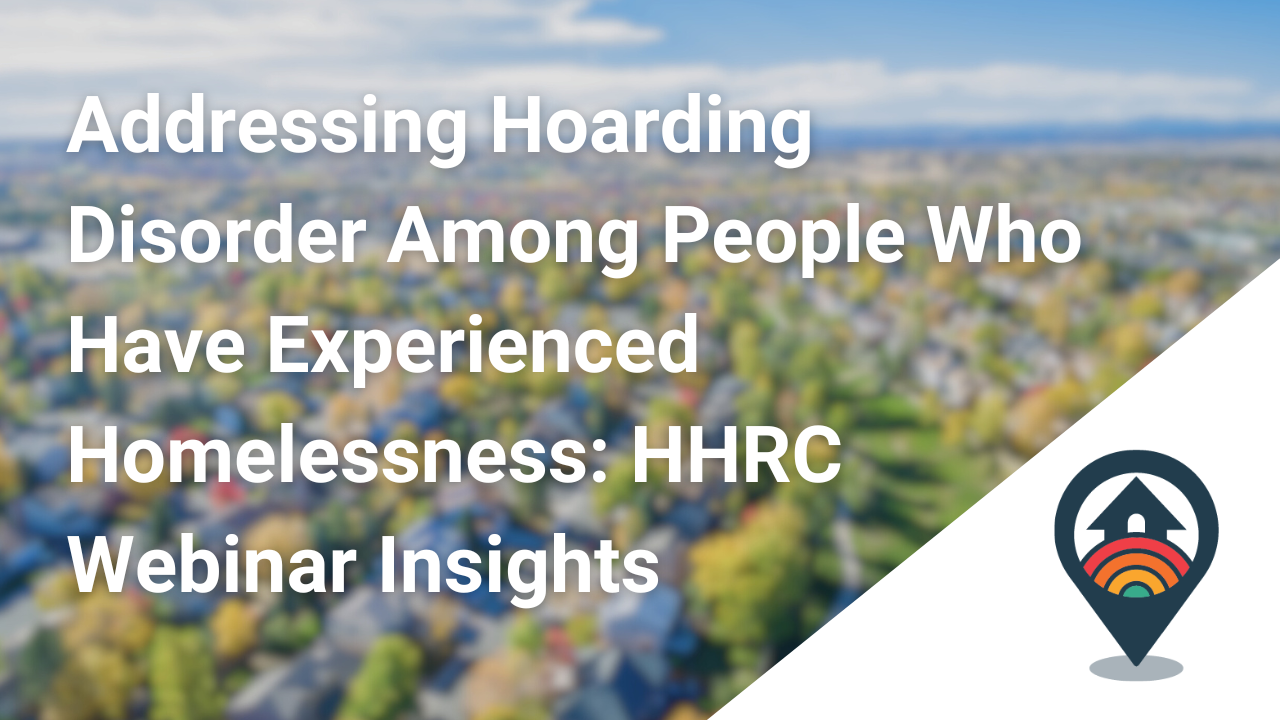Hoarding disorder is a behavioral health condition that impacts many individuals, and it can pose particular challenges for those who have experienced homelessness. Addressing hoarding disorder requires a multifaceted approach, involving assessment, treatment, and collaboration between clinical and non-clinical staff. A recent webinar from SAMHSA’s Homeless and Housing Resource Center (HHRC), titled “Introduction to Hoarding Disorder,” provided an overview of this condition, including assessment methods, treatment approaches, and clinical tips. Read below for key insights.
Q: What is hoarding disorder, and how does it differ from general clutter or messiness?
A: Hoarding disorder involves the persistent difficulty discarding or parting with possessions, regardless of their actual value, due to a perceived need to save them. This results in the accumulation of items to the extent that living areas become cluttered and unusable. Unlike general clutter, hoarding disorder significantly impairs daily functioning and creates distress.
Q: How prevalent is hoarding disorder among the general population and among those who have experienced homelessness?
A: Hoarding disorder affects approximately 1.5% to 5% of the general population. Among individuals who have experienced homelessness or housing instability, the prevalence can be higher, with studies indicating that up to 22% of those close to eviction and 18–19% of individuals in supportive housing who have experienced homelessness exhibit hoarding behaviors.
Q: What are the common signs and symptoms of hoarding disorder?
A: Common signs include excessive accumulation of possessions, difficulty discarding items, cluttered living spaces that impair daily activities, and significant distress or impairment in social, occupational, or other areas of functioning. Individuals may also have a lack of awareness about the severity of their condition.
Q: How does hoarding disorder impact daily life and relationships?
A: Hoarding disorder can severely affect daily life by making living spaces unsafe and unusable, leading to decreased hygiene, difficulty preparing meals, and disrupted sleep. It can also strain relationships with family, friends, and neighbors due to health and safety concerns related to clutter and the social stigma associated with hoarding.
Q: What are the key principles of assessing hoarding disorder?
A: Assessment involves understanding the extent and impact of hoarding behaviors, typically using tools like the DSM-5 criteria for hoarding disorder. Clinicians assess the level of clutter, the individual’s ability to use their living space, and the distress or impairment caused by hoarding.
Q: What treatment approaches are effective for hoarding disorder?
A: Effective treatment approaches include cognitive-behavioral therapy, which addresses unhelpful thinking patterns and behaviors, and exposure therapy, which gradually helps individuals reduce their clutter. Supportive services, including case management and collaboration with housing authorities, are also crucial.
Q: How can clinical and non-clinical staff collaborate in treating hoarding disorder?
A: Collaboration involves clear communication, mutual goal setting, and leveraging each team’s strengths. Clinical staff can provide therapy and behavioral interventions, while non-clinical staff can offer practical support and advocacy, ensuring a holistic approach to treatment.
Q: What role does trauma play in hoarding disorder?
A: Trauma often plays a significant role in the development and continuation of hoarding disorder. Many individuals with hoarding disorder have experienced trauma, which can exacerbate their symptoms. Understanding and addressing trauma through trauma-informed care is essential in treating hoarding disorder.
Q: How can providers support clients with little or no insight into their hoarding behaviors?
A: Providers can support clients by building a trusting relationship, using motivational interviewing techniques, and focusing on harm reduction and safety. It’s important to be supportive when clients decline offers of help, keeping the door open for future assistance and gently encouraging them to engage in treatment.
Q: What resources are available for further learning and support in addressing hoarding disorder?
A: Resources include the Clutter Image Rating Scale for assessment, the Think Trauma training curriculum, and the TARGET model for building self-regulation skills. Additionally, local hoarding task forces, housing lawyers, and public health departments can offer support and services.
For more in-depth exploration of these topics, watch the full webinar linked below or access the free, accredited online course, Introduction to Hoarding Disorder.
This blog post was developed with the assistance of generative artificial intelligence.


